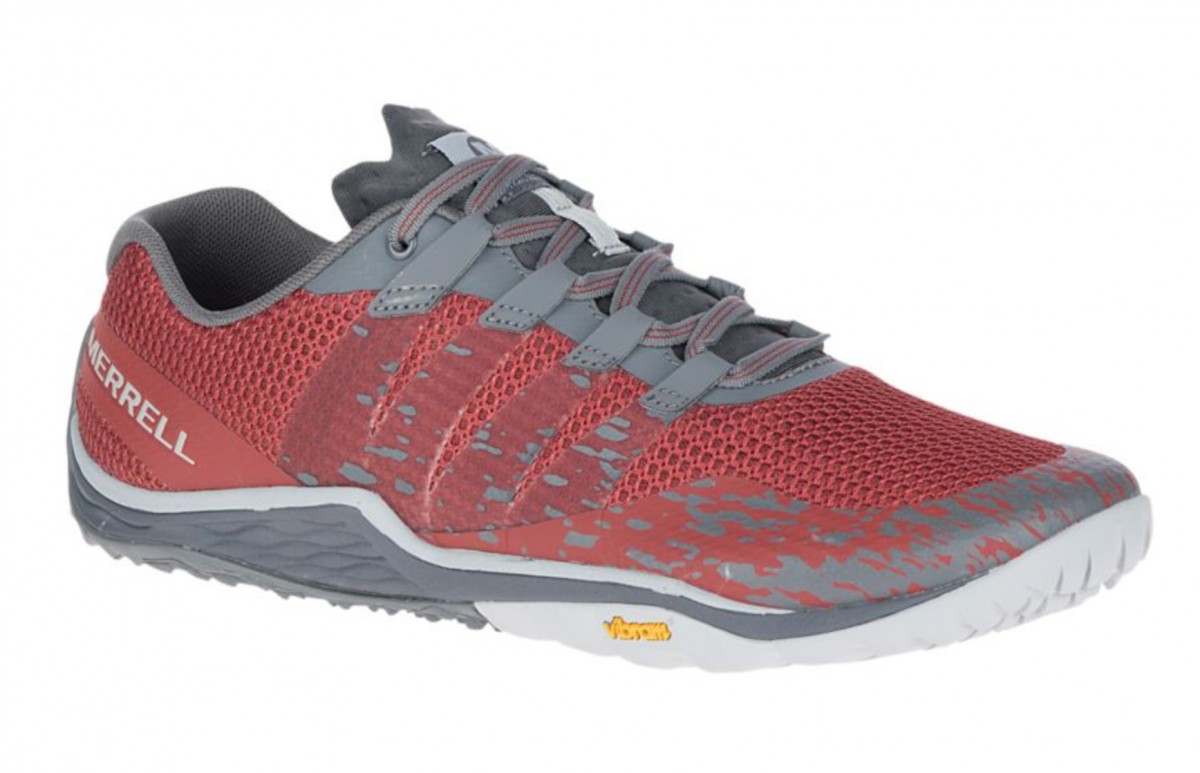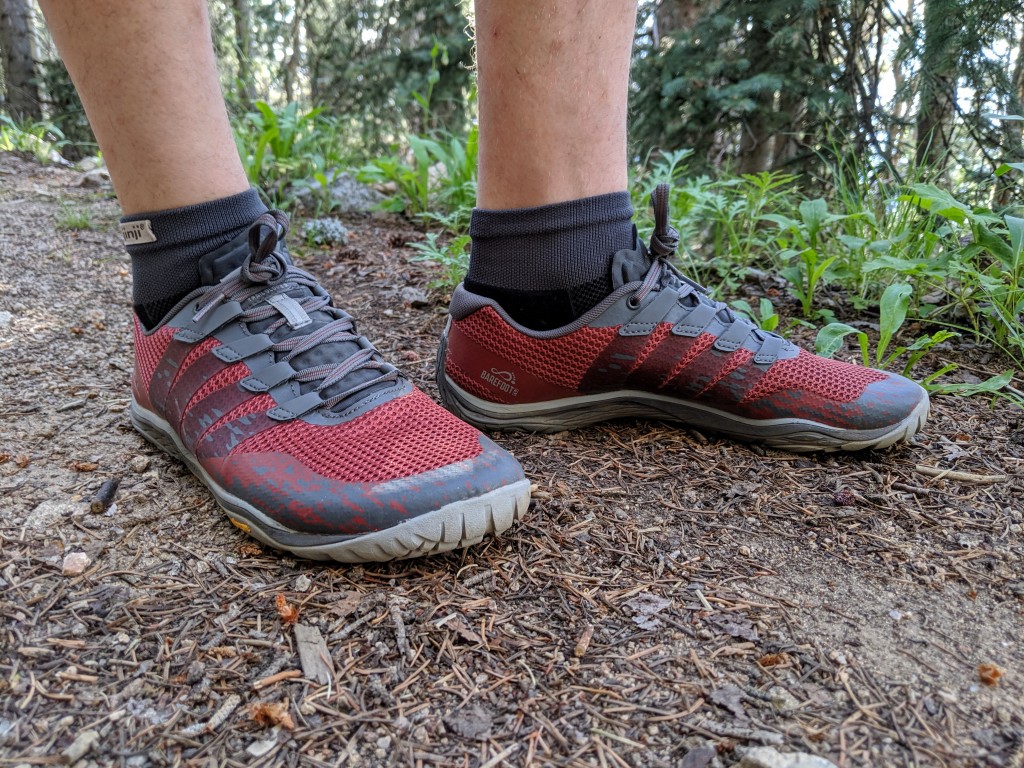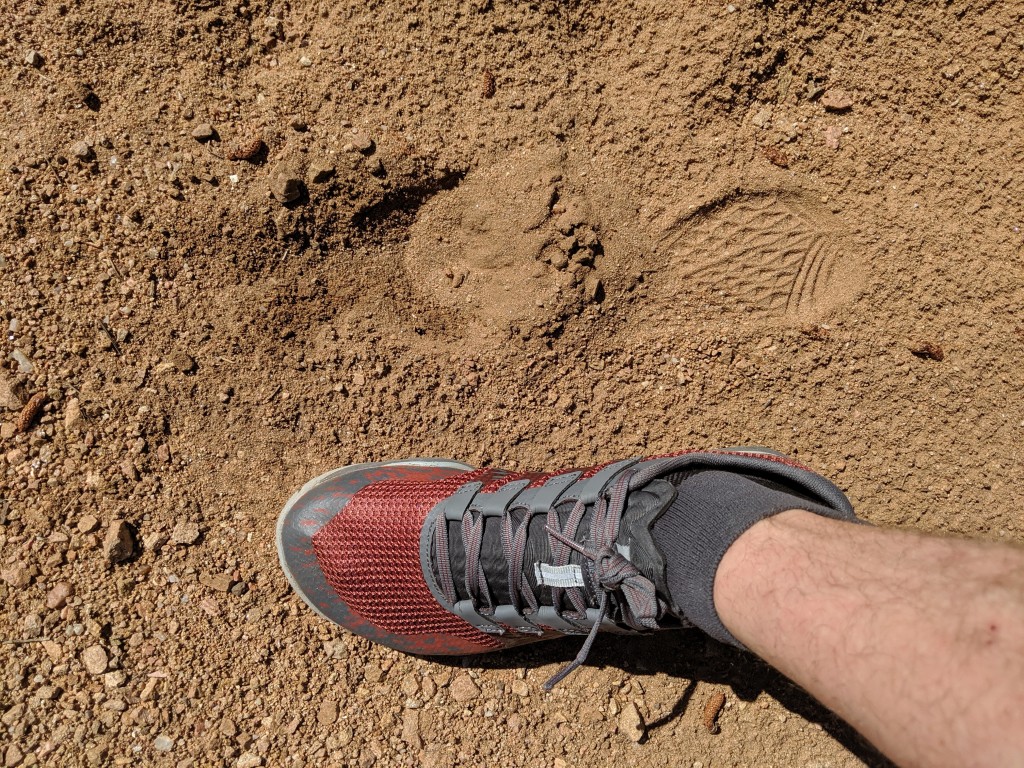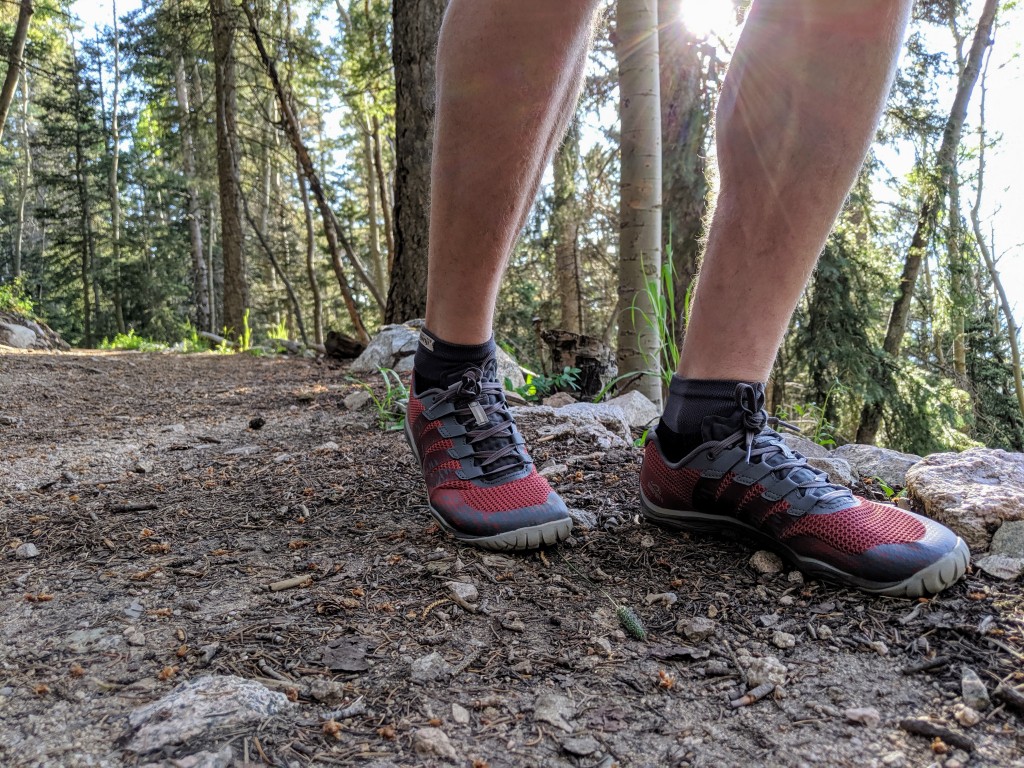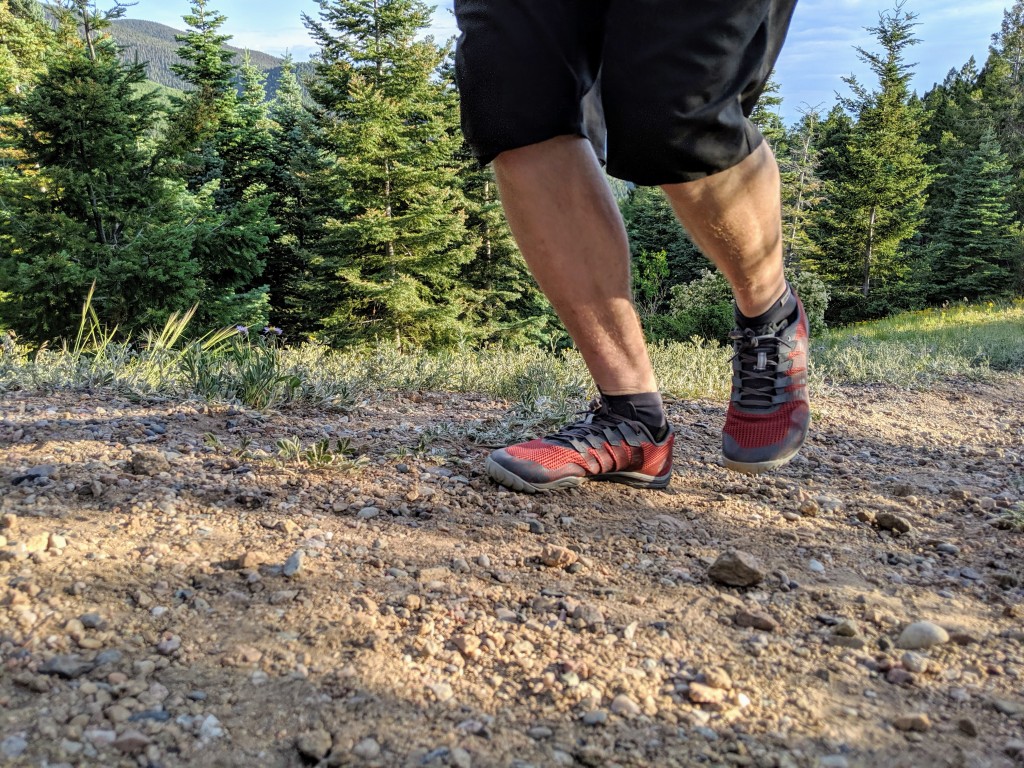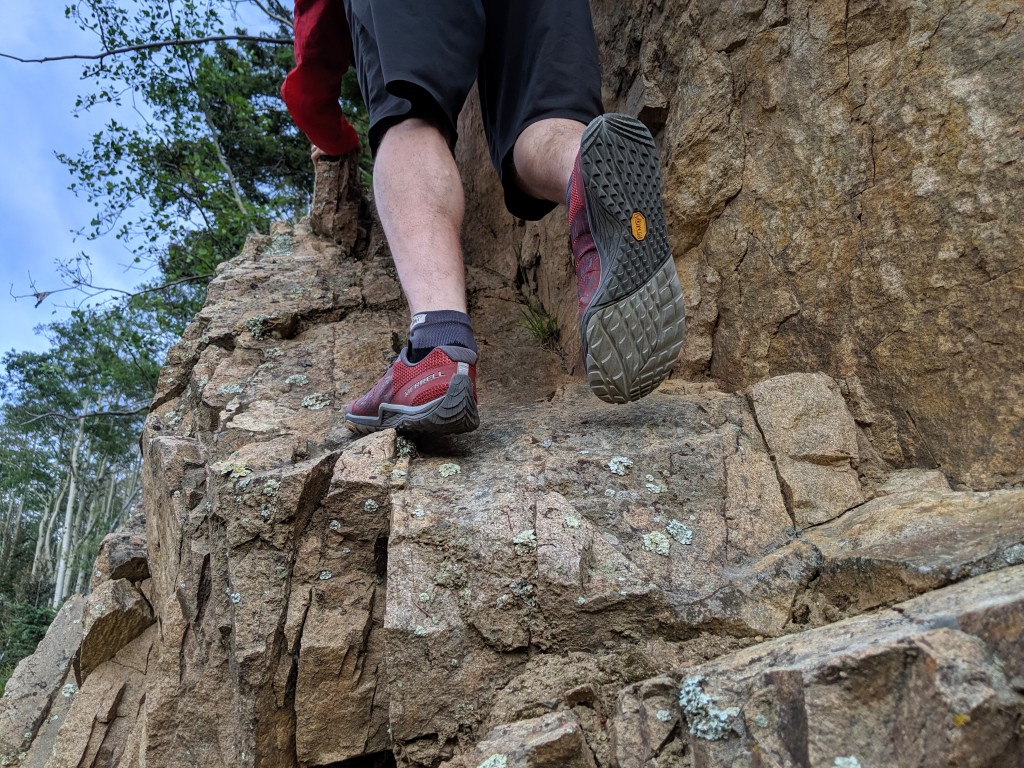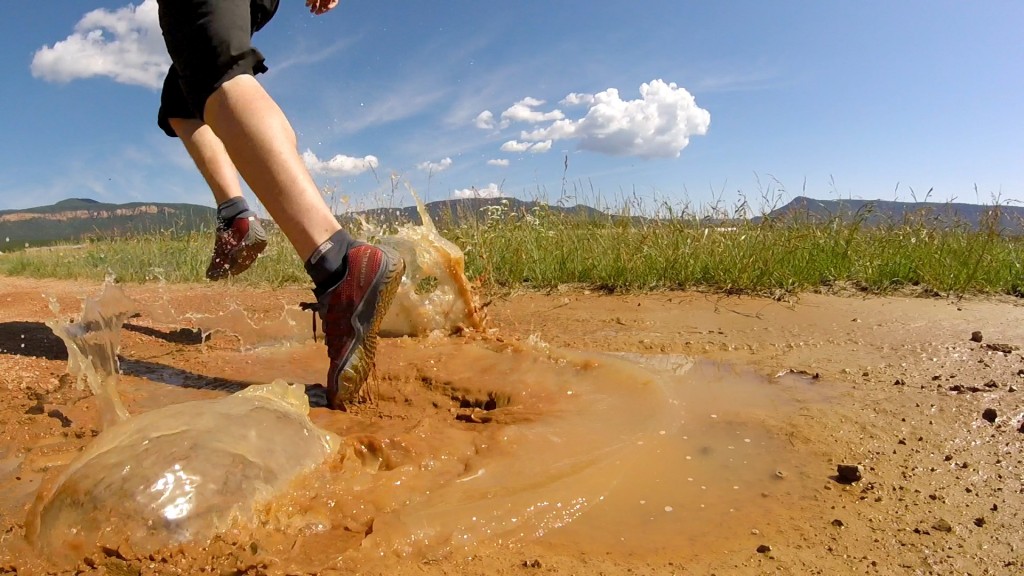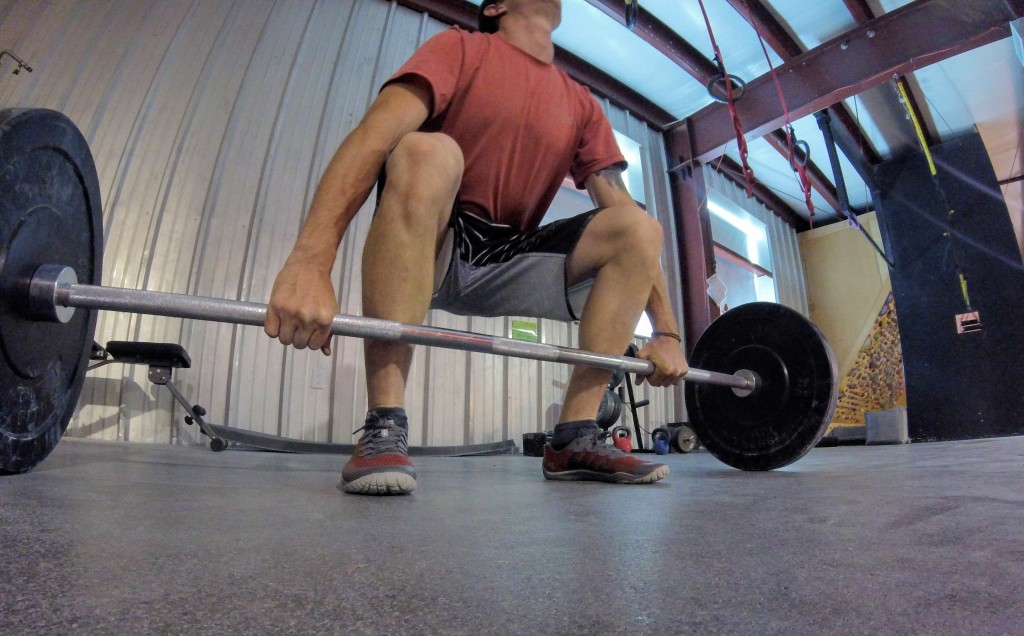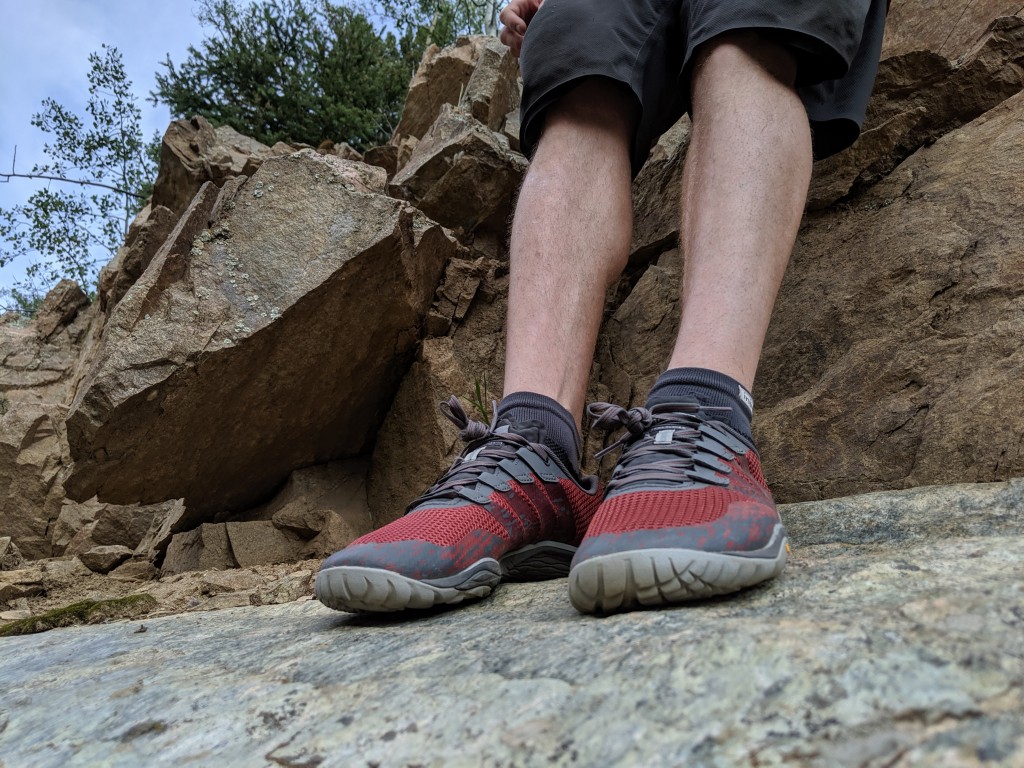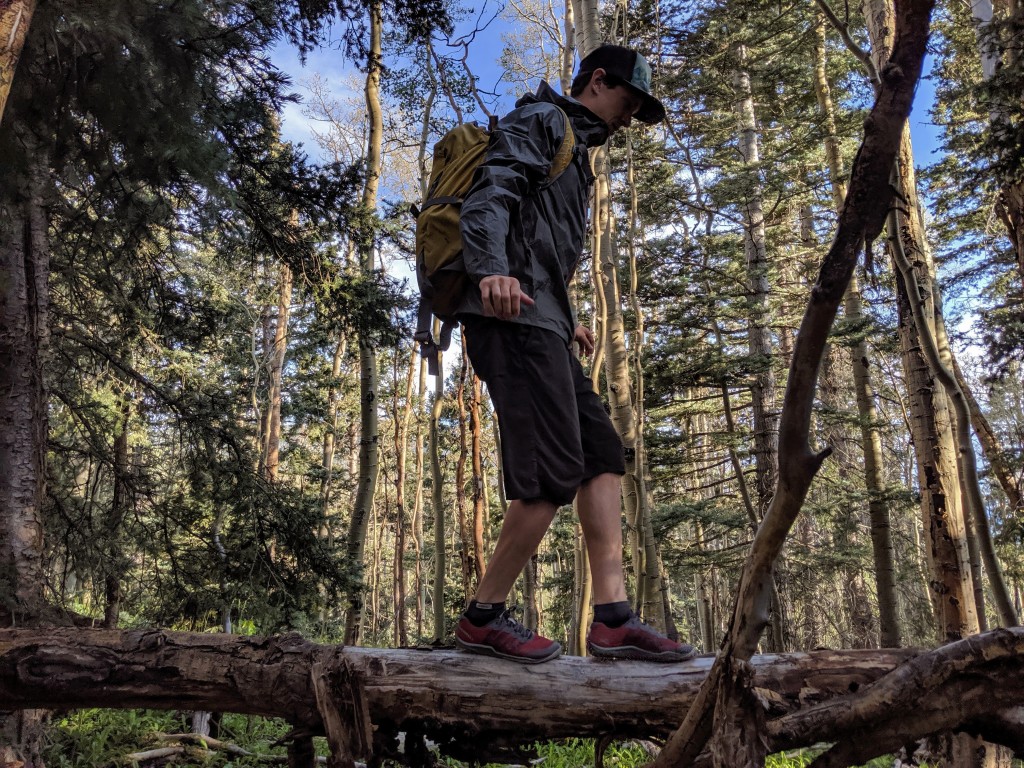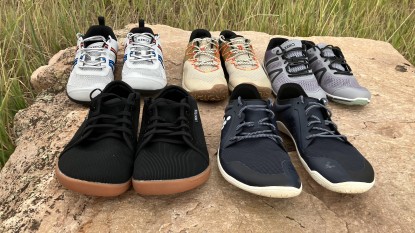Merrell Trail Glove 5 Review
Our Verdict
Our Analysis and Test Results
If you approach this shoe as an ultralight trail runner, we would put it at the top of its class. But from the stance of a minimalist running shoe, the Trail Glove 5 misses the mark. While we found that the Barefoot 2 construction does a good job of mimicking the shape of the foot standing still, in motion, it resulted in an unnatural change to our gait. The flex of the Trail Glove is adequate in the toe box, but a relatively thick midsole makes the shoe much more torsionally rigid — sacrificing barefoot accuracy for the sake of added stability. A well-lugged outsole makes for a grippy ride through any trail conditions, which boosted our confidence in response to making quick adjustments to balance. Unfortunately, the current version of this shoe is heavily augmented, and as a result, the Trail Glove 5 hardly fits the mold of a barefoot running shoe. But for the minimalist who is looking for a versatile trainer, this shoe makes a compelling case when compared to bulkier trail runners.
It is important to note that while these two share a name, they are very different shoes. The knit upper of the Trail Glove 5 3D affords a lighter, sock-like feel compared to the regular laced version. But we found the 3D very difficult to size properly, with our normal size feeling nearly two-sizes too big — we highly suggest trying these on in a shop before purchasing.
Performance Comparison
Performance
The Trail Glove 5 is a versatile running shoe. The merits of its construction are highlighted on uneven mountain trails, and the shoe has a low-profile design that is lightweight and airy, keeping feet cool over miles of pavement. However well it runs, it is difficult for us to rationalize the concept behind Merrell's Barefoot 2 design.
The midsole puts pressure on the inside of the foot, making us want to pronate and land on that “sweet spot” of the forefoot between the fourth and fifth toes. But for those of us who already have a comfortable amount of pronation in our gait, we found ourselves pushing back against it, and actually supinating — something that is not a normal part of our running posture. We believe it is important for a minimalist shoe to get out of the way and allow the user to run naturally, not dictate through design how natural should feel — since we each have our own individual way of running, a way that is natural to our individual design, not the design of a shoe.
The Merrell website notes that this shoe fits 1/2 size larger than their normal sizing. We found this to be consistent in our testing, and ran in a US 8 (EU 41.5) rather than a US 8.5 (EU 42.) But make sure to check their size chart for the proper conversion — one half-size in US does not always correlate directly to one-half size in EU.
Barefoot Accuracy
As mentioned above, the most significant update to the Trail Glove 5 is the new Barefoot 2 construction: an articulated midsole that is designed to enhance the micro-movements of the foot in motion. Supplementary cushioning in the midsole helps with impact over long mileage, and a rock plate further helps protect the bottom of your foot from sharp objects on the trail. But after long runs, the outside of our feet — particularly underneath the arches, near the heel — felt strained, likely as a result of pushing back against the “support” of the midsole construction.
Whatever the intention of design, the addition of a 4mm midsole significantly decreases ground-feel flexibility through the midfoot and forefoot — which results in diminished flexibility in the toes — and the feeling of conventional arch support. Add a rock plate, a 1.5mm outsole, 3mm lugs, and we reach a total of 7mm of material between your foot and the ground. While the Trail Glove is impressively responsive, we felt separated from the trail.
Weight
On first-impression, the Trail Glove is a very comfortable, lightweight running shoe. The exterior mesh of the upper is supplemented by an interior mesh lining — a combination which results in exceptional breathability, translating to a remarkably airy feeling when running.
Tipping the scales at 6.9 ounces per shoe, the Trail Glove is surprisingly one of the lighter-weight models in our review. We can only imagine what this shoe could achieve in terms of minimalist running if designers decided to drop all of the extras that only add to the overall weight.
Traction
Traction is a crucial factor for trail runners, and in this category, the Trail Glove scored high marks. But unlike other barefoot designs, grip does not come from the toes' ability to splay and flex into the ground.
Instead, the Trail Glove makes use of a particularly sticky rubber over the forefoot, and well-designed lugs across the outsole. The 3mm lugs resemble the teeth of a chainsaw blade, and switch directions at the midsole — a thoughtful design concept that increases grip on the way up, and braking ability on the way down.
Versatility
As more of a minimalist, rather than barefoot design, the Trail Glove is one of the most versatile shoes in our review. On trails, the shoe easily adapts to terrain spanning from desert to alpine; it does a nice job of keeping the feet protected from below from roots and rocks, and above from rain. The lightweight and low-profile zero-drop platform is nearly equally comfortable over miles of pavement.
The best attributes of the Trail Glove are breathability and stability, also making it a great option for the gym. For those looking to switch from conventional to more minimalist running shoes, the combination of an 11.5mm stack height and 3mm of cushion in the insole helps make the transition in this shoe a little more manageable.
Durability
For its impressive weight, the Trail Glove also sports a sturdy exterior. The outer-mesh is supplemented with bands of TPU — notably, where the lacing eyelets attach to the upper, a common spot for blowouts.
Rather than a full-rubber toe rand, a slightly thicker layer of TPU protects the front of the shoe from abrasion and the potential of the mesh ripping, while also cutting down on weight. Supported by a full-Vibram outsole, we foresee very few issues with durability.
Value
The Trail Glove 5 is middle-of-the-pack in terms of price. Considering the extra support and durability this shoe offers up for trail runners, we feel the asking price is fair.
Conclusion
While not the same, beloved barefoot-runner it was in past models, the Merrell Trail Glove 5 proves its merit as a minimalist trail running shoe. Supportive, low-profile, lightweight, and grippy, this shoe boasts a list of attributes we seek out in responsive trail runners. For those with high-arch issues looking for a little extra support without having to add a bulky insole, you will likely love the design of the new midsole. If you are a long-distance trail runner looking to cut down on weight for a more efficient stride, you will also appreciate the performance of this shoe. But if you are a barefoot-enthusiast seeking out your next trail-specific shoe, we suggest looking elsewhere. With the additions of a rock plate and a relatively stiff midsole that dictates foot movement, this new Trail Glove loses sight of its original intentions as a barefoot running shoe.


